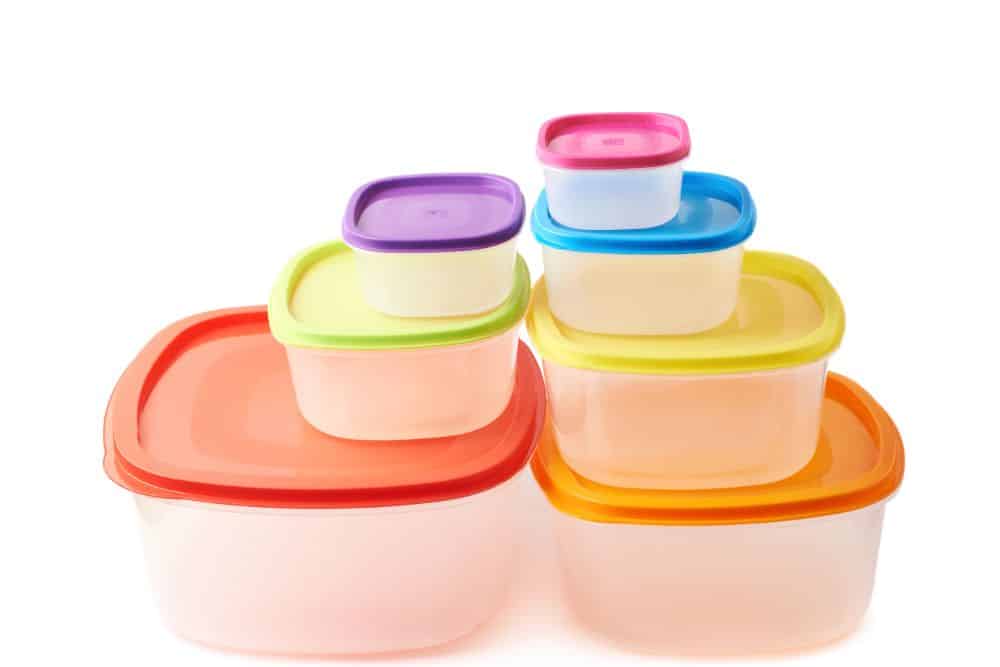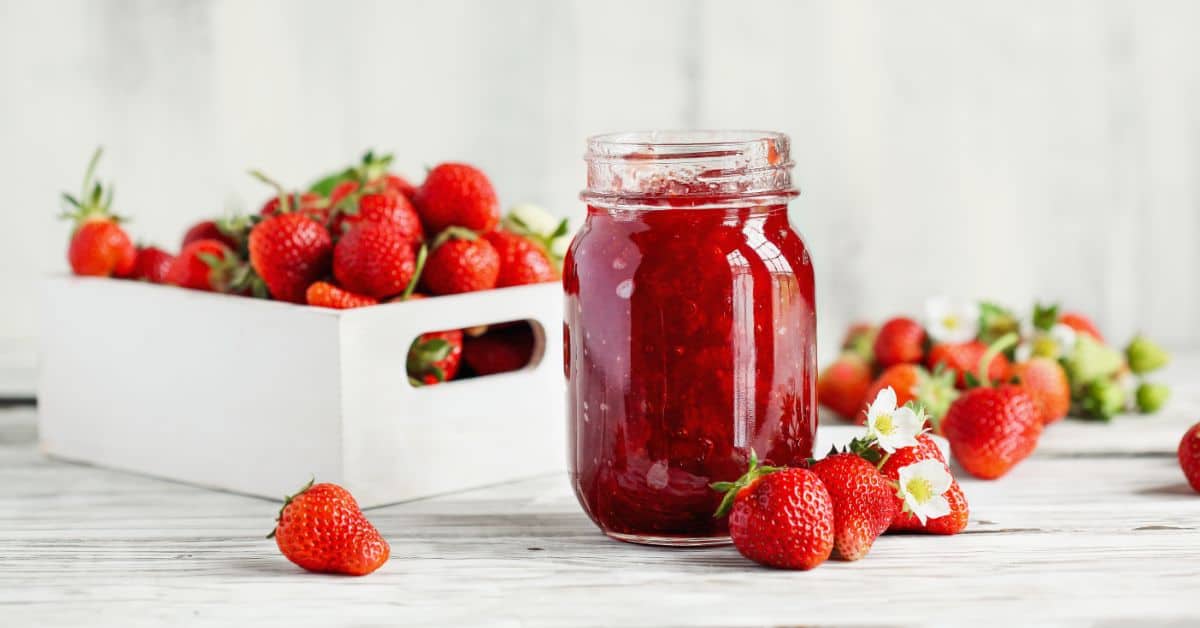A well-stocked and well-organized pantry is essential for the best kitchen. No matter what you want to cook, you’ll want all the ingredients on hand. From flour to spices, everything should be fresh and at your fingertips.
But now and then, you might find some unwelcome visitors in your pantry. Weevils, ants, moths, and even bed bugs are common pantry pests that like to burrow into dry goods and nest. When that happens, your ten-pound bag of flour goes from batter-ready to garbage.
So, how do you go about keeping bugs from your pantry? Although there are many steps to keeping your food fresh, proper food storage in a bug-proof food storage container is the most important.
Not every storage container is necessarily bug-proof, but the best bug-proof containers have airtight or locking seals. These seals prevent air and moisture from sneaking into the dry ingredients within your storage container, effectively stopping mold, bacteria, insects an.
They can be used for long term food storage for the family's dry food as well as for pet food. An airtight plastic bin is a must as a dog food storage container. If you've ever had a pest (like a mouse) get into your bag of dog kibble, you probably understand the importance of transferring pet food to a virtually impenetrable plastic storage box immediately after opening.
Most airtight containers are made of glass, metal, or plastic. You can also purchase airtight bags. However, it’s important to remember that a brand new sealed package isn’t necessarily bug-proof. Many pantry pests can chew through thin plastic or paper, negating a factory seal entirely. Many bugs are so small that a hair-width hole is all they need to sneak in and lay their eggs.
You'll come across many options when seeking out airtight and bug-proof containers. There's a bug-proof container for every purpose, from easy-to-use storage boxes to food storage containers that require a bit more leg work.
Some of the most straightforward containers to keep bugs out are one-touch boxes and jars. These containers offer a lid that fits perfectly inside the rim. Then, with the push of a button, the container is sealed. The seal the top creates prevents any air or moisture from creeping in.
The main thing you have to remember about push-button containers is that you can’t pick them up by the lid. Although the seal is airtight, it isn’t attached as securely as a twisting or snapping lid might be. Nevertheless, when used properly, push-button lids are a great storage option for standard pantry ingredients and even dog food.

Plastic Sealed Containers are Effective at Keeping Insects Out
If you want to stick with the basics, standard plastic or glass jars will do a great job keeping bugs out of your food. A properly-tightened jar provides a seal that’s all but unbreakable when it comes to insects or larvae. In addition, you can find jars in an array of sizes and styles, making it easy to choose the perfect set to complement your kitchen.

Sealable Glass Jars Preserve Freshness and Keep Bugs Away
The drawback to jars is that, although they might keep larger things like bugs out, the same can’t be said for moisture or bacteria. If you’re looking for a strictly bug-proof container, jars should do the trick. However, if you’re also combating spoilage, you might want to try one of the vacuum-sealed options.
An easy and cost-effective airtight option is a zipper bag. These thick plastic bags create an airtight seal using zipping technology to hold the bag closed. Although Ziploc is probably the most common brand of zipper bags you’ll find with airtight seals, there are plenty of other brands to choose from. They also come in various sizes and thicknesses, allowing you to choose the right fit for your needs.
The only issue with zipper bags is that they’re not as durable as hard plastic or glass. Plastic zipper bags can puncture or separate at the seams, so it’s best to store the sealed bag inside a sturdier container. Or, if you want to make a more permanent investment, you can purchase reusable zipper bags. Reusable options are made with thick, durable plastic that’s tough enough to create an airtight seal and stand up to the dishwasher.
Canning is a tried-and-true practice that involves using heat to create an airtight seal on a glass jar. Anyone who’s tried their hand at canning knows precisely how effective a canning seal can be. When done correctly, the metal lids on glass canning jars maintain an airtight seal that keeps bugs, bacteria, and moisture out for months, if not years.
Although canning is incredibly effective at keeping bugs and other contaminants out, it takes time and practice. Without the proper knowledge and equipment, your canned foods could spoil quickly. Fortunately, a lot of information is available to teach you how to do canning right. Once you get the hang of it, your pantry items will be bug-proof for months.

A Properly Sealed Canning Jar Keeps These Strawberry Preserves Fresh and Bug-Free
Another highly effective bug-proof container is a vacuum-sealed bag. Vacuum-sealed bags consist of a sturdy plastic bag with an attachment that allows you to use a vacuum or other device to remove all the air from inside. Not only are vacuum-sealed bags excellent for bug-proofing your pantry goods, but they’re also great for freezer-proofing meats and other foods.
A vacuum-sealed bag is an easy and cost-effective option for discouraging pantry pests. You can easily find a lot of brands at varying price points. However, vacuum sealing requires special bags and a vacuum or sealer to properly remove the air. If you want a cheaper bug-proof bag, zipper bags will be your next best option.
When you’re on the hunt for airtight and bug-proof containers, you’ll likely find hundreds of options. However, you have to remember that they aren’t all created equal. Some are far more effective than others, depending on your needs.
The first question you need to ask is, what are you sealing? Depending on the type of food that you’re sealing up, you’ll want to choose your container carefully. For example, if you’re sealing flour, sugar, or another dry good, you’ll want a genuinely airtight container. A plastic container or snap-lid container could quickly introduce bacteria or insects.
Similarly, certain containers listed above might eventually leak in moisture if you don't seal them properly. So, choose a vacuum-sealed container if you’re looking for something that will combat moisture, bacteria, and bugs.
Although most of the airtight and bug-proof containers you find will be designed for the pantry, that’s not true for all. Vacuum-sealed bags and containers are excellent choices if you need to store goods in a storage unit outside your kitchen.
For example, many homeowners have supplementary food container in their garage or basement. If that’s the case, you’ll need something more adept at keeping out bugs since those areas are more prone to infestations. Vacuum-sealed containers and canning jars will be your best option if you plan to store foods outside your pantry.
There are a lot of other steps you can take to protect your food from bugs. In addition to an airtight or bug-proof container, consider doing the following to prolong the life of your pantry goods.
You'll typically pay a lower unit price when you purchase cereal, stored grains, and other everyday household products in large quantities. However, it’s important to remember that certain things should be purchased in smaller quantities. You should always be selective about what you buy in bulk and what you buy in standard packaging.
For example, products like flour and rice are perfectly safe to buy in bulk. Store them in a bug-proof container, and they’ll last for months. On the other hand, purchasing lesser-used items, such as obscure recipe ingredients, in bulk isn’t always wise. Even in a bug-proof container, a product that isn’t consumed within a specific time will ultimately spoil.
Although it should go without saying, always examine your groceries before loading them into your bug-proof containers. By and large, your new groceries will be safe and free from anything that could lead to an infestation. But that’s not always the case.
When you go to the grocery store to buy a bag of flour, the shelf is almost always coated with a dusting of flour. The flour on the store shelf indicates that the bags aren’t airtight. Therefore, it’s entirely possible the bag you choose could be contaminated with pests or bacteria. So, before dumping your products into their airtight containers, sift through a bit to be sure there aren’t any weevils or other insects present.
Consumers’ views of expiration dates range from those who follow them strictly to those who see them merely as a guideline. In some cases, there’s a lot of flexibility with printed dates, especially if you know the difference between a “best by,” “sell by,” and “use by” date. If not, take some time to read up on them.
When storing products long-term, using bug-proof and airtight containers will undoubtedly prolong your food’s shelf life. That said, you should still keep expiration dates in mind for storage. When you load your food into its container, note the expiration date somewhere, so you know when to start watching for spoilage.
Perhaps the most important way to prevent bugs from sneaking into your food is by practicing good pantry maintenance. Keeping your pantry clean will go a long way in prolonging your food’s shelf life.
If you want to maintain a sparkling clean pantry, take some time every few months to give yours a good scrub. It won’t be a quick job, to be sure. First, you’ll have to take everything off the shelves and clean from top to bottom. Then, you’ll need to inspect your containers and wipe those down, too. But, the end result will be a clean, bug-free pantry.
Unfortunately, no matter what you do to protect your food, bugs can sometimes find their way in. So, what do you do if you take the proper steps and still find yourself with an infestation?
Your first step is to figure out how bad the infestation is. For example, if you’ve found a few moth larvae in your stored grain, it’s probably safe to just dispose of the grain and clean out the container. Similarly, ants can usually be tackled with a few traps once you throw away whatever they’ve been nibbling on.
However, some pantry infestations, such as bed bugs, are typically large. When that happens, you’ll need to take further steps to tackle the problem. Sometimes, a call to your local pest control might be the best option.
